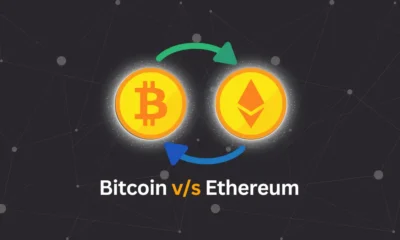Blockchain Technology
DEVELOPMENT OF BLOCKCHAIN TECHNOLOGY
The idea of blockchain technology started with an anonymous group/person (pseudonym Satoshi Nakamoto) in 2008 when he published the Bitcoin’s whitepaper.
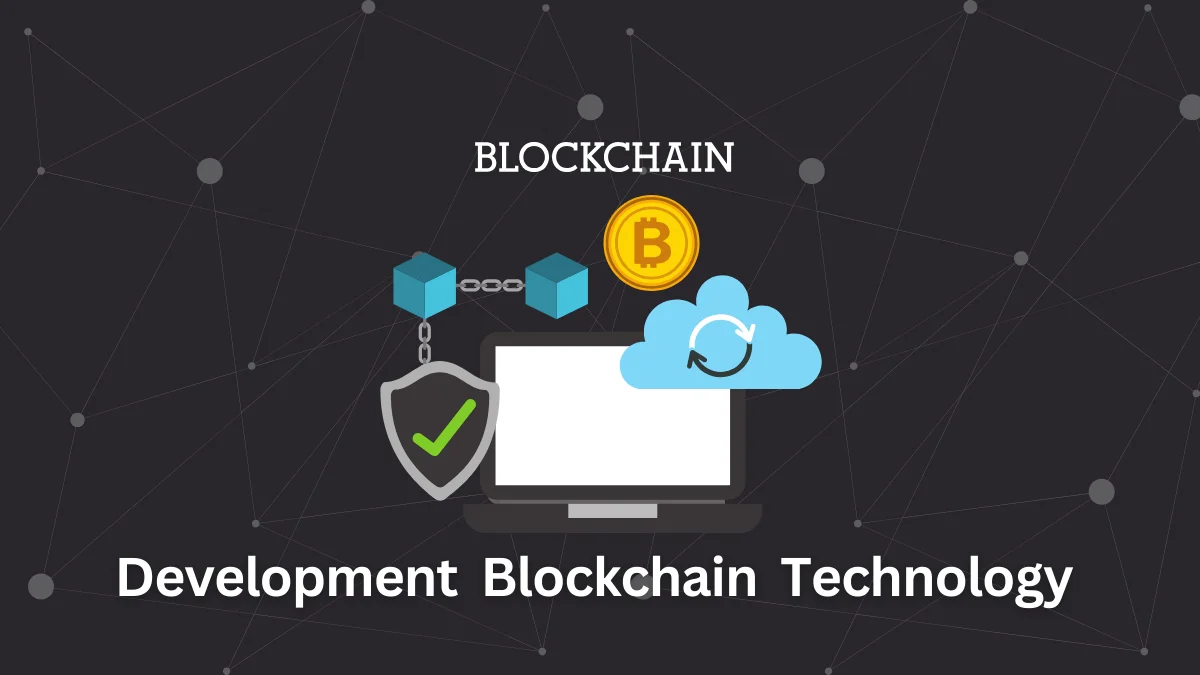
Blockchain technology, a term that had ceased to have a single meaning since it emerged as a driver of cryptocurrency such as Bitcoin, has now rematerialized as a disrupting innovation that has the potential to revolutionize multiple sectors apart from finance. The fact that it has grown from an idea applied in one of the pillars of technological change clearly indicates its versatile nature and the ability to create solutions that are transparent, secure, and decentralized in nature in this article we will have a closer look at the history, what present blockchain technology is capable of, and an outlook of its vision for the future.
Origins and Evolution
The idea of blockchain technology started with an anonymous group/person (pseudonym Satoshi Nakamoto) in 2008 when he published the Bitcoin’s whitepaper. It had introduced a new ledger system that was decentralized and had allowed setups such as P2P transactions to be conducted without the involvement of a third party. This new method of making deals used to be very revolutionary, which was revolutionary characteristics such as convenience, privacy, and security that could not be provided before.
Blockchain technology has a decentralized mechanism at its core, in which data is curated on a digital ledger of a network of computers, making it extremely secure and difficult to hack or modify. Each block in the chain has several transactions that reflect the transaction that happened in the last time. So, every time a new one in a transaction is formed then a copy of that transaction is added to the blockchain of every individual in such a network. This brings about the much-needed standard that reminds you that altering any information would need all entities being stakeholders without exception.
Beyond Cryptocurrencies
A lot of attention (including the first) to the practical use of the blockchain was concentrated in the financial sphere through cryptocurrencies in the first place, but its potential goes much further. As a result of these attributes such as data integrity, data security, and decentralization, it has created a very favorable platform for the creation of modern technology in various industries.
Supply Chain Management
From a perspective of follow-ups in supply chain management, blockchain gives an extra of never-experienced traceability and transparency. Through blockchain, all the parties on the supply chain can provide updates on the trail of the journey. This capability significantly reduces the risk of fraud and errors, ensuring the authenticity of products and optimizing logistical processes.
Healthcare
The healthcare industry would undeniably be on the receiving end of a lot of blockchain technology. Patients’ medical records can be stored on a blockchain creating a secure and unmodifiable base that is hardly synchronized with an emergency patient. It guarantees the privacy and security of patient data while allowing the smooth sharing of information between healthcare providers. At the same time, this leads to higher quality of care as it helps healthcare providers to manage better and be more efficient.
Voting Systems
Blockchain technology gives the possibility to build secure and transparent voting systems by making all transactions clear and trustworthy. In the event of using blockchain, voting can be carried out in the form of transactions, whereby each vote is immutably recorded and stored, making instances of fraud and manipulation virtually impossible. This might turn election day conducting into a different ballgame, meaning that it will be more accessible, quick, and controllable.
Challenges and Limitations
Although it’s true that blockchain technology possesses many benefits, there are also certain problems with the usage of such technology. Scalability is still the main concern for Broadening Limitations, because deepening the blockchain centralization, all transactions have to appear on numerous computers, and thus, there are potential bottlenecks, and more energy consumption can be observed. In addition to that, the regulation and legal obligations with respect to blockchain technology are still under development, which also is an obstacle in the way of full adoption of the technology.
Also, the technology’s complexity and the need for a huge number of computational resources make it difficult for smaller organizations not only in developed countries but also in those countries in the initial stage of industrialization. Achieving cross-blockchain system interoperability and privacy-enforced transparency without losing the touch of privacy are also spheres in evolution.
The Future of Blockchain
The future of blockchain technology implementation looks favorable, with improvements being made that will address the demerits that currently linger Enhancements that address the difficulties of scalability and environmental impact include sharding that divides the blockchain into small sizes digesting data more package and updating the consensus mechanisms that would consume less energy.
Increased activities in decentralized finance (DeFi), non-fungible tokens (NFTs), and smart contracts further point toward how blockchain applications are getting more expansive. Alongside this, these improvements don’t only increase the technology acceptability but also lead to the creation of a more communicative and comprising digital economy.
Besides that, the deployment of blockchain technology with other advanced technologies, namely artificial intelligence (AI) and the Internet of Things (IoT), could pave the way for fresh outcomes. It is an example where blockchain can withstand AI-powered decisions safely while communicating through blockchain can assure correct data transmission and smart automation processes.
The technology of the blockchain has come a long way since its discovery at first, which has become to be used not just for the transfers of cryptocurrencies, but for many other domains with a high potential for being transformed. The development of this cryptocurrency shows clearly which direction we are heading in to create a safer and more comprehensive digital environment. However, it all depends on whether the arising problems will be adequately resolved and whether the technology will meet its future. While we keep on getting deeper and deeper into its applications daily, blockchain proves to be a befitting example of what humans can achieve through technological advancements and innovation.

Blockchain Technology
CAN THE BLOCKCHAIN BE HACKED
Saying Farewell to Ham Crypto: Embracing Change for a Brighter Future, also know Can the Blockchain be Hacked

In the ever-evolving world of cryptocurrency, change is not just inevitable, it’s essential. As we navigate through this dynamic landscape, the time has come to bid farewell to Ham Crypto. This farewell is not the last ballad but a salutation to a mission achieved a period of study, and a new chapter in your life. In this article, we take a closer look at the reason behind this migration also the optimistic outlook that it often creates for the supporters and the larger crypto family. We also focus can whether the Blockchain is Hacked and How.
The Inevitable Cycle of Innovation
Cryptocurrency, since its inception, has been about pioneering and embracing innovation. The legend of Ham Crypto, as is often, proves the point that every time new technology enters the world all of the previous ones become obsolete. I experienced it, I enjoyed it, and now it is present for the next generation, refined and changed to become a more modern version with ever newer and more advanced options. This circle process is not a stop or a culmination of something but an incentive to keep seeking further than the horizon.
Learning from the Journey
Ham Crypto’s journey has been nothing short of a roller coaster ride filled with valuable lessons. It has taught us to be adaptable, that you cannot underrate what a community can do, and that security procedures must be vigilant. The knowledge and experience acquired cannot be lost but are turned into the basis for moving on and succeeding in other crypto ventures.
The Importance of Adaptability
One of the key takeaways from Ham Crypto’s evolution is the critical importance of adaptability. In an unstable market, as the crypto one is, the capacity to have quick change and constant change is, undoubtedly, of paramount importance. The feedback loops run even farther beyond the technologies that we manipulate: they also influence the investment strategies, the regulations adopted, and the way we construe the economics of the future.
Community and Collaboration
Ham Crypto jelled a heterogeneous crowd that was internally contributing to the show where people could meet with individuals sharing the same interests as the community. That joint way of serving is solid proof of the great power of unified efforts and common purpose. The foundation of this competition remains firm, providing impetus for the next wave to be based on innovation and the launches of fresh projects as well.
Advancements in Security and Technology
Security has always been a cornerstone of the cryptocurrency conversation. mentally Ham Crypto mission has demonstrated both resistance and excitement in this way. Even though many digital currencies are being manipulated and used in criminal activities as the knowledge about them widens, these insights are the foundation on which safer protocols are established and new creative designs that aim to secure and trouble-free operation of digital currencies are developed.
Embracing New Horizons
The departure from Ham Crypto is not about discarding the past but about looking forward to new opportunities. In the stage of cryptocurrency, the sky appears to be the limit, proclaiming that the untapped is their new scope with the integrated concept. Thus excellent execution of the roadmap will produce significant profit.
The Rise of Next-Generation Cryptocurrencies
As we say goodbye to Ham Crypto, we welcome the advent of next-generation cryptocurrencies. Innovators in the market break through and have an upper hand with their modern technologies, efficient scaling, better security features, and environmentally friendly practices, all of which aim to address the weaknesses of their predecessors.
Sustainability and Social Responsibility
The crypto industry is increasingly focusing on sustainability and social responsibility. The knowledge gained from the Ham Crypto projects is encouraging us to be secure and environmentally conscious in the process upgrade of the mining practices and adoption of cryptocurrencies in areas such as financial inclusion and support of charitable causes.
The Future of Finance
Crypto has always been regarded as “a primary way of money reforming”, and this process is called a practical step towards it. Through blockchain technology improvements, progressive DeFi solutions, and pioneering NFT initiatives the blockchain be hacked, world has unlimited possibilities. The departure of the Ham token marks a way for finance that goes with no boundaries, complete transparency, and all citizens having equal chances.
A Positive Farewell ( protect from Blockchain being Hacked)
The time when I say goodbye to Ham Crypto carries mixed emotions with an addition of optimism and hope being the main ones. It represents the constant lifelong process of gaining knowledge, establishing skills and seeking betterment. Even as we turn a new page, we will continue to take with us the things we learned, memories, and accomplishments from Ham Crypto. They can be building blocks for future days, which are not monotonous, but full of intellectual stimulation.
Crypto is at a crossroads between the past and future, with both ends being considered as beginnings. For some, it might be the next step in the progression of the global economy, while others might see it as a new course. By the moment we leave Jam Crypto now, we aspire to embrace the future with our wide-opened arms, face and deal with new challenges and overcome them, as well as utilize our enthusiasm and hard work and go up.
Finally, let’s toast for those good times behind us that we have thought through together and for the expedition that lies in front of us, one that will be, hopefully, as worthwhile and meaningful as our cooperation was. Blockchain Be Hacked is a topic that raises concerns in the crypto community. Despite its security measures, the possibility of blockchain being hacked remains a lingering worry.
However, amidst these uncertainties, the resilience of blockchain technology prevails. It’s essential to address these concerns transparently and implement robust security protocols to mitigate the risks associated with blockchain being hacked.
Together, we can navigate through challenges and embrace the boundless opportunities that lie ahead. So, here’s to a future where the integrity of blockchain remains unyielding, and our aspirations soar higher than ever before. Let’s seize the moment and shape a tomorrow where the question of blockchain being hacked becomes a relic of the past.
Blockchain Technology
WHAT IS BLOCKCHAIN TECHNOLOGY
Blockchain technology provides the basis for cryptocurrencies. This technology is a digital immutable data records system that exists across network-linked computers.
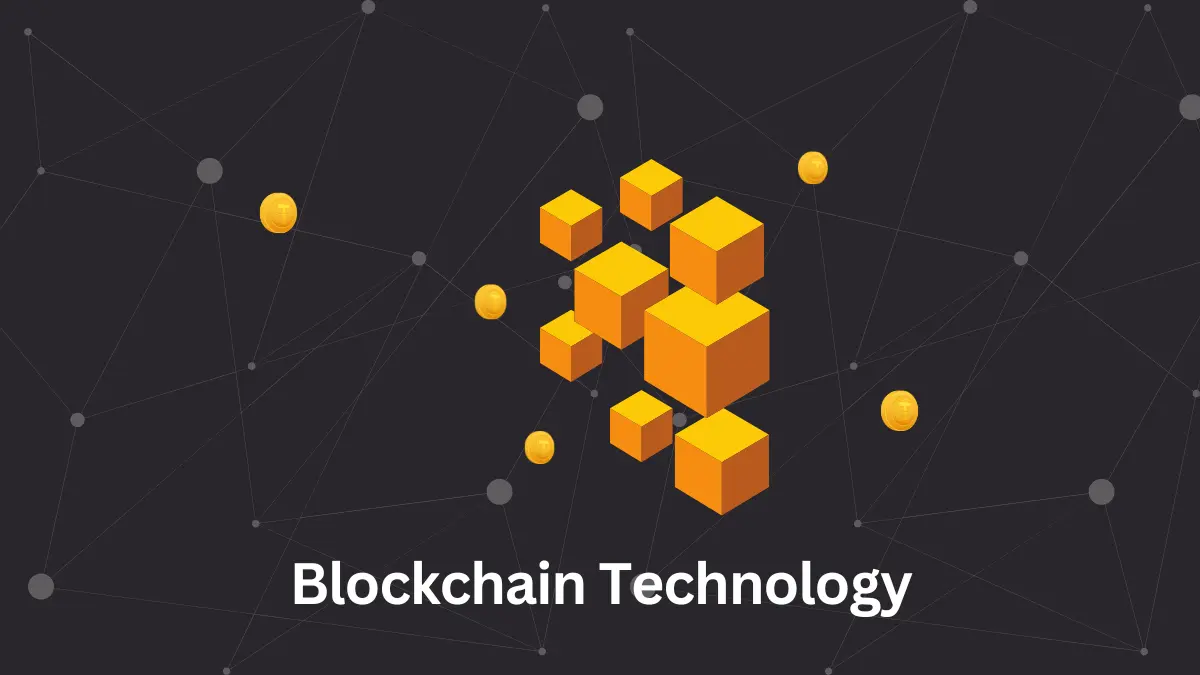
For a person to have a deep understanding of cryptocurrency, Simplyfy provides Deep knowledge which he or she has to look at the very core of the topic that is changing on a daily basis, not forgetting to consider how the actual technology works, its supposed economic role in the future, the regulatory framework and predictions regarding it. This exhaustive report will comprise a roadmap through the history of cryptocurrency development around the globe starting from the very beginning to the present time, the problems they have to deal with, and also risks with their consequences to the worldwide monetary scene.
In a cryptocurrency, which is a digital or intangible form of currency, cryptography is used for data being encrypted and keeping them uncopyable. Bitcoin considered the first one, appeared in 2009, created by a mysterious person called Satoshi Nakamoto, who was the father of cryptocurrency. The magnitude of the digital currency market has grown apace, while Ethereum, Ripple, and Litecoin, among others, are some of the other digital currencies born from that era. Unlike fiat money, digital currency tries to negotiate transactions based on decentralized platforms through blockchain technology and the ledger that is distributed and controlled by the network of computers.
Simplyfy Know your Understanding
Technological Foundations
Blockchain technology provides the basis for cryptocurrencies. This technology is a digital immutable data records system that exists across network-linked computers. As a result, the control over the coin is not done by some single system, therefore, cryptocurrencies have much to do with fiat money, which is under the control of governments and central banks. Through Simplyfy information, the unbreakable cryptographic nature of blockchain technology, transactions are made even more secure, compared to traditional financial services where data security is one of the major concerns.
Smart contracts, which are self-executing contracts with the feature of auto-execution of conditions, and code written into terms, serve as another principal amendment in the cryptocurrency industry, for instance, the Ethereum platform. They enable computers to perform transactions and agreements automatically, thus enabling trustless exchanges of digital assets without intermediaries, which may bring about the most impactful changes from the perspective beyond the borders of only financial services, including real estate, healthcare, legal services, and others.
Economic Implications
Issuance of fiat coins and circulation of regular notes were the prevailing norms in the economy. Now, the entrance of cryptocurrencies has introduced new paradigms in the economy. Although they rebuff classical monetary theories as well as the place of central banks in paying attention to the money supply and inflation, they are not in full conflict with these theories and the place that central banks occupy. Cryptocurrencies being deflationary have capped their supplies, thus theoretically minimizing the liquidity problems that result from inflation.
From Simplyfy perspective, deflation has advantages over inflationary policies. While the instability of cryptocurrency exchanges raises questions about their feasibility as reliable sources of value and means of payment, they generally represent a new, robust financial network capable of self-sustenance and resilience. Little-known cryptocurrencies which have been able to make small payments possible, might end up leading to an e-commerce boom on a vast scale. From Simplyfy perspective they would be ideal for small value transfers of meager costs, thereby developing unprecedented business models for digital cost content creators and providers of services.
Regulatory Environment
The underlying regulations for cryptocurrencies continue to be a complex and transient area to navigate. Political bodies, as well as financial regulators worldwide, are in a dilemma as to whether to group digital currencies in the same category as regular ones or to create rules designated specifically for digital currencies. From the absolute ban to the envoys of green (usually, it means “cannabis” legally growing) freedom, there are different types of government bills worldwide that prove a wide range of government views on recreational, financial independence, and financial affairs (this angle might be looked at separately or integrated into recreational and financial independence).
The question of regulation is filled with contradictions, where stopping the misuse of the system for activities like money laundering and financing of terrorism is key but not at the expense of innovation and financial inclusion. The untraceable nature of transactions made anonymous, even though it comes with privacy support, comes with a snorter of traditional financial surveillance systems.
Future Potential and Challenges
Cryptocurrencies will gain a place of prevalence in the process of technological evolution which will be defined by such keywords as global tech trends, regulation, and economy. The combination of digital monies with emerging techs like the Internet of Things (IoT) and artificial intelligence (AI), might stimulate wider implementation opening new doors of cryptos for the global economy. They would be ideal for small value transfers of meager costs, thereby developing unprecedented business models for digital cost content creators and providers of services.
Regulatory Environment
The underlying regulations for cryptocurrencies continue to be a complex and transient area to navigate. Political bodies, as well as financial regulators worldwide, are in a dilemma as to whether to group digital currencies in the same category as regular ones or to create rules designated specifically for digital currencies. Covering the blanket law to green admirals of freedom and Roald Amundsen’s bill attacks, in different parts of the world, the artwork of the law suggests a good variety of attitudes towards earth-arresting, financial independence, and purchasing power.
The question of regulation is filled with contradictions, where stopping the misuse of the system for activities like money laundering and financing of terrorism is key but not at the expense of innovation and financial inclusion. The untraceable nature of transactions made anonymous, even though it comes with privacy support, comes with a snorter of traditional financial surveillance systems.
Future Potential and Challenges
Cryptocurrencies will be an integral part of technology evolution, and they will depend on global trends in technology, regulation as well as the economy. From Simplyfy perspective, the combination of digital monies with emerging techs like the Internet of Things (IoT) and artificial intelligence (AI), might stimulate wider implementation opening new doors of cryptos for the global economy.
However, significant challenges remain. In addition to these technological challenges, energy consumption is quite significant, particularly in cost-intensive proof of work consensus mechanisms as well as the necessity to improve the security features. Besides adapting that, the acceptance will need easy-to-use interfaces to make it possible for non-technical users to get access to cryptocurrencies. Cryptocurrency transforms the operations in global finance and foretells the era of the digital money world. Yet, realizing the potential spin-offs of the technology is not that straightforward since the problems have to be resolved and where regulations are concerned.
Cryptocurrencies are likely to improve and earn a level of trust with regulators as regulations mature. Future development will possibly give trading options and forms of financial inclusion that the conventional financial systems don’t offer and enable the creation of the current economic systems. In the crypto world, computer science, economy, and law interlink with each other and behave as an absolute revolution integral to traditional currencies and monetary transactions. From Simplyfy perspective, While its cryptocurrency mining has been widely acknowledged as its underlying technological basis, blockchain has a lot more to offer, such as secure decentralized transactions and applications far away from cryptocurrencies.
The changes, although they present challenges, are a manifestation of the growing awareness of the contribution that this segment can have to the transformation of financial systems. The digital world is also a space for cryptocurrencies to flourish as a dominant monetary system that disorganizes traditional financial institutions and acts as a platform for generating simpler economic development and novel innovations.
The existence of crypto will be an ongoing process, where the full effect of their implementation on the social and economic surface, of all aspects, is still not entirely clear to many people. That’s even as cognizance of this up-to-date technology continuously goes upwards and with the continued existence of a definite regulatory structure, we will be in the position to forecast the way sooner or later cryptocurrencies will be used in the global financial world.
Blockchain Technology
BLOCKCHAIN 101 A COMPLETE INTRODUCTION
The way that we think about data transfer, security, and management has been completely transformed by blockchain technology.

The way that we think about data transfer, security, and management has been completely transformed by blockchain technology. The concept in question has gained momentum across multiple sectors, including finance and healthcare, owing to its ability to provide openness, effectiveness, and security. We will go into the basics of its technology in this blog, briefly what it means, how it works, and why it’s seen as an innovative development.
What is Blockchain?
In basic terms, distributed ledger technology (DLT) is used by blockchain to record transactions across several computers and devices in a way that precludes data modification after the fact. A new kind of the internet is made feasible by this approach, which allows digital information to be distributed without being copied. The technology was initially created for the virtual money Bitcoin, but the IT community has discovered more possible applications for it.
DLT) uses multiple systems to record activities in a way that the tech community has discovered more possible applications for the technology, which was initially created for the virtual currency Bitcoin.
How Does Blockchain Work?
It works through a chain of blocks, where each block contains data, the hash of the block, and the hash of the previous block.
This structure makes the blockchain secure in several ways:
Decentralization: Unlike traditional databases (like a bank’s computer systems), It doesn’t have a central location. It’s hosted by millions of computers simultaneously, making its data accessible to anyone on the internet.
Transparency: Everyone who participates in the blockchain network has access to the entire database and its complete history. Every transaction is visible to everyone, ensuring transparency and making it extremely difficult to manipulate data without being detected.
Immutability: Once a transaction is recorded in a block and added to the chain, it is very difficult to alter. If a transaction block is altered, it would invalidate all subsequent blocks. This feature makes sure that information is almost impossible to alter once it is stored on the blockchain.
Consensus: Transactions are approved by consensus among participants in the network, making the system highly democratic. Proof of work (PoW) or proof of stake (PoS) is a mechanism that is commonly used in the process to validate transactions and add them to the blockchain.
Why is Blockchain Considered Revolutionary?
It technology is revolutionary because it has several benefits, including:
Enhanced Security: It technology’s decentralized, unchangeable structure provides enhanced protection against fraudulent activity and data breaches.
Enhanced Speed and Efficiency: It can save a great deal of time and energy by facilitating peer-to-peer transactions and doing away with the need for middlemen.
Lower Costs: Transaction costs are decreased by the chain of blocks, which does away with the requirement for third-party verification.
Enhanced Transparency and Trust: Users are more likely to trust one another since
Its transparency makes sure that all transactions are accessible and verifiable.
Applications of Blockchain
The technology of blockchain is currently used by financial companies like the Simplyfy platform, to speed up and maintain financial activities, including securities settlement and international payments.
Supply chain management: Providing an unchangeable, transparent record of the entire supply chain—from manufacture to distribution—increases efficiency and traceability. It is technology provides an opportunity for secure wellness record exchange and storage while preserving data privacy and security.
Voting Systems: They provide an electronic voting method that is transparent and safe, making elections less susceptible to fraud and guaranteeing their integrity.
The technology of blockchain is currently used by financial companies like the Simplyfy platform, to speed up and maintain financial activities, including securities settlement and international payments.
Supply chain management: Providing an unchangeable, transparent record of the entire supply chain—from manufacture to distribution—increases efficiency and traceability. It is technology provides an opportunity for secure wellness record exchange and storage while preserving data privacy and security.
Voting Systems: They provide an electronic voting method that is transparent and safe, making elections less susceptible to fraud and guaranteeing their integrity. efficiency, and traceability. Its technology has promise for preserving data security and privacy while protecting the exchange and storage of medical records.
Voting Systems: They provide an electronic voting method that is transparent and safe, making elections less susceptible to fraud and guaranteeing their integrity.
More than only the foundation of cryptocurrency lies in blockchain technology. Its ability to provide easily accessible, secure, and effective solutions. makes it a significant advance in a variety of industries. Technology is having a bigger impact on digital transactions and data security as we investigate and create new applications for it. Anyone navigating the digital age, whether they are a business professional, a computer enthusiast, or just someone curious about the direction that technology is headed, has to have a basic understanding of blockchain.
-

 Regulations3 weeks ago
Regulations3 weeks agoCRYPTOCURRENCY REGULATION
-

 Crypto Guides3 weeks ago
Crypto Guides3 weeks agoBITCOIN HALVING 2024 EXPLANATION
-

 Market Updates3 weeks ago
Market Updates3 weeks agoHOW CRYPTOCURRENCIES MAY IMPACT THE BANKING INDUSTRY
-
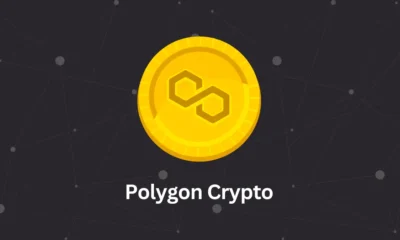
 Crypto Guides3 weeks ago
Crypto Guides3 weeks agoPOLYGON CRYPTO
-

 Market Updates3 weeks ago
Market Updates3 weeks agoCRYPTOCURRENCY AND DECENTRALIZED FINANCE (DEFI)
-
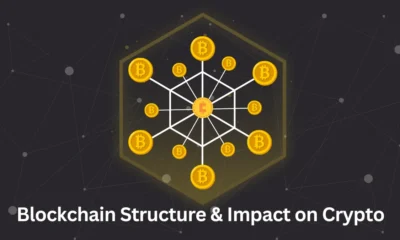
 Crypto Guides3 weeks ago
Crypto Guides3 weeks agoBLOCKCHAIN STRUCTURE AND IT’S IMPACT ON CRYPTOCURRENCY PRICES
-

 Blockchain Technology3 weeks ago
Blockchain Technology3 weeks agoCAN THE BLOCKCHAIN BE HACKED
-
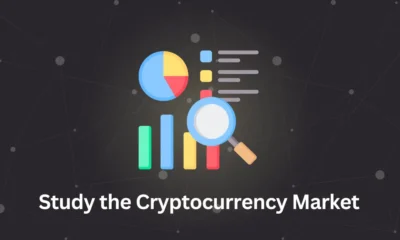
 Market Updates3 weeks ago
Market Updates3 weeks agoHOW TO STUDY THE CRYPTOCURRENCY MARKET FOR BEGINNERS




